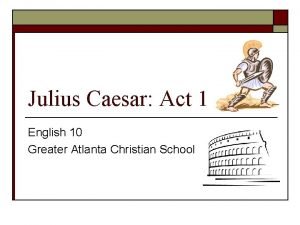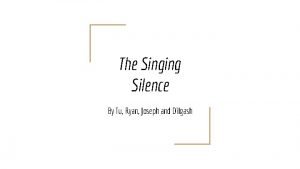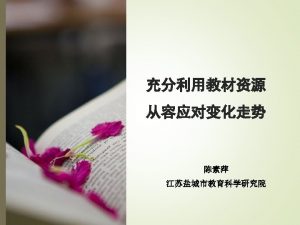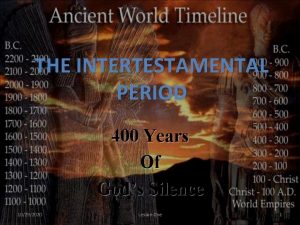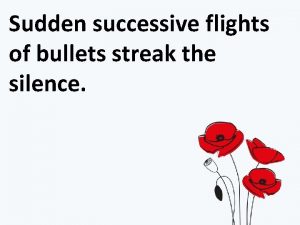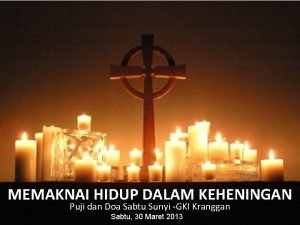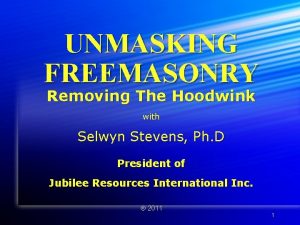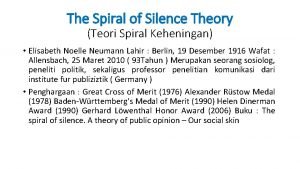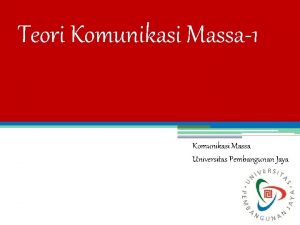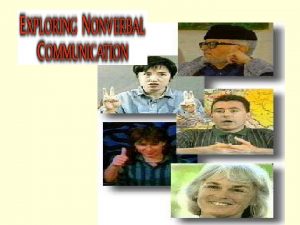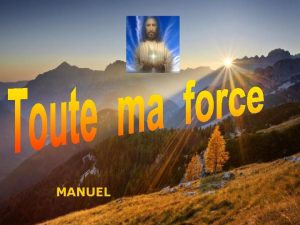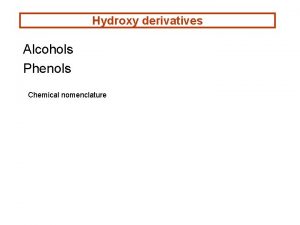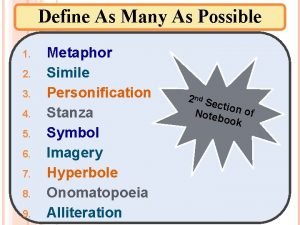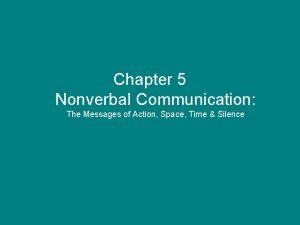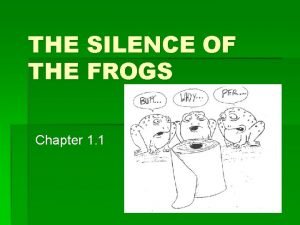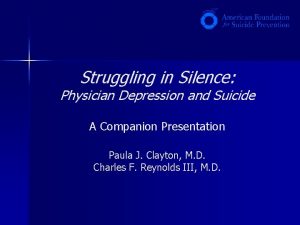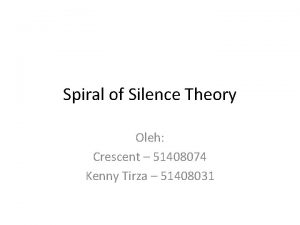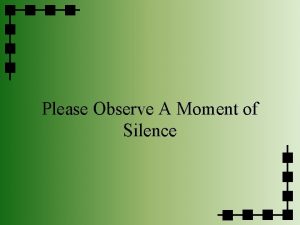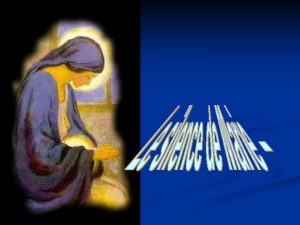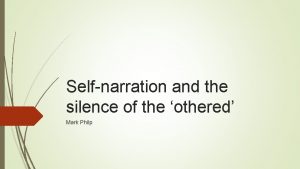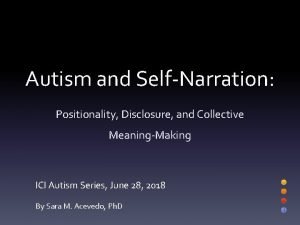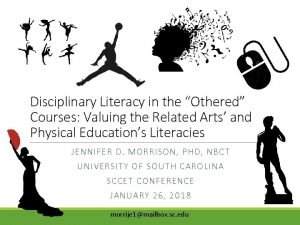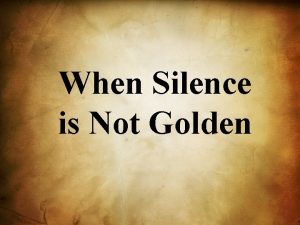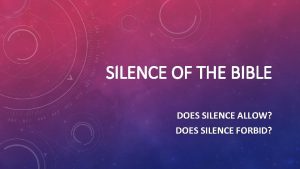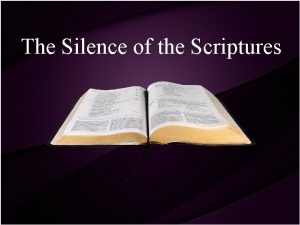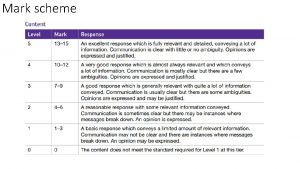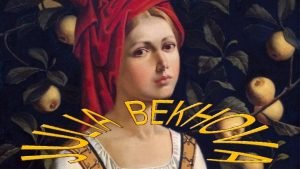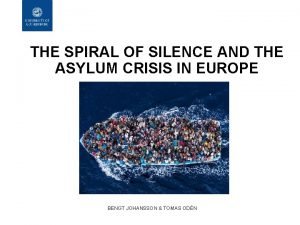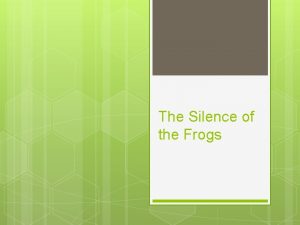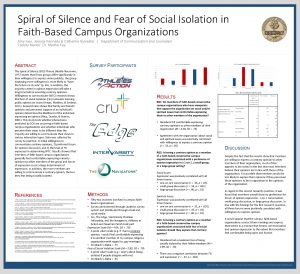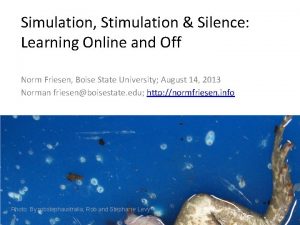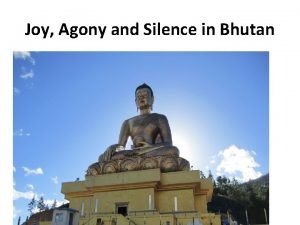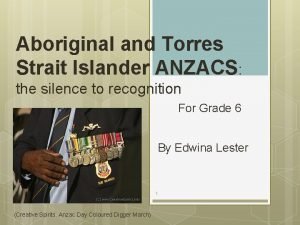Selfnarration and the silence of the othered Mark






































- Slides: 38

Self-narration and the silence of the ‘othered’ Mark Philp

Ibram K Kendi, How to be an anti-racist (2019) An idea, action or policy is either racist – ie. , contributing to a history that regard and treats different races as inherently unequal; or it is anti-racist, because it is trying to dismantle that history.

Medieval and renaissance art

Othello Aaron in Titus Andronicus

Talking about the ‘other’ Onyeka Nubia, “‘Blackamoores’ have their own names in Early Modern England” in Hakin Adi ed. Black British History (2019) (1485 -1620 s) Kathleen Chater, Untold Histories: Black People in England Wales during the period of the British Slave Trade c. 1660 -1807 (2009) Terminological precision – descriptive terms vs racial terms – black vs early nineteenth century Latin American terminology ‘quodroons, octaroons, quintaroons, mustees etc. Early descriptive terms were imprecise – moor, and blackamoore, negre – Spanish/Portuguese for black (which was primary EM arena of encounter) Some evidence of self-description Moor, blackamoore, Morisco Descriptions in registers of B/D/M – little standardization, and often no ref. Evolving language of race in late 18 th C

Number and occupations in UK Claims for 30, 000 – or as low as 3, 000 Concentration in London No evidence of ‘black communities’ Some evidence of integration – Servants – use of slaves or former slaves – seamen, concentration around slaving ports – Bristol, Liverpool, Lancaster – and London Also clearly many free people of colour working in and around London from beginning of the early modern period

Slaves, servants and others Runaways – servants, slaves and apprentices Assumptions about slaves: Ottoman world/ Algiers/ plantations in America and Caribbean 1745 advertisement for ‘Young Negro or Mulatto Fellow’ ‘The owner of such a one may hear of a purchaser, by applying to Mr Baker at Lloyd’s Bar…or such a fellow who has disposal of himself, may be treated with, applying to the same Place and Person. ’ Belief that baptism ended status as a slave Wages, payment in kind, reliance on tips

Historical pitfalls Only victims No agency, no self-definition Not segregated by law, state policy, convention or religious doctrine from other peoples in Tudor or Stuart Society Not restricted to black communities Not only slaves – and not the only slaves Limited concerns about miscegenation But much changed in development of the triangular slave trade


Francis Williams c 1700 -1762 Duke of Montague (1690 -1749) English school and Cambridge Father, sugar industry Death in 1762 – property c £ 500 consisting mainly of 16 slaves

Ignatius Sancho c 1729 -1780 Born on a slave ship – New Granada Brought to England (age 2) – met Duke of Montagu Takes refuge 1760 marries West Indian woman 1766 Sterne Voter in Westminster Composer, Greeengrocer, playwright

Ignatius Sancho c 1729 -1780

Sterne: A tender tale of the sorrows of a friendless poor negro-girl When Tom, an' please your honour, got to the shop, there was nobody in it, but a poor negro girl, with a bunch of white feathers slightly tied to the end of a long cane, flapping away flies—not killing them. —'Tis a pretty picture! said my uncle Toby—she had suffered persecution, Trim, and had learnt mercy——She was good, an' please your honour, from nature, as well as from hardships; and there are circumstances in the story of that poor friendless slut, that would melt a heart of stone, said Trim; and some dismal winter's evening, when your honour is in the humour, they shall be told you with the rest of Tom's story, for it makes a part of it— Then do not forget, Trim, said my uncle Toby. A negro has a soul? an' please your honour, said the corporal (doubtingly). I am not much versed, corporal, quoth my uncle Toby, in things of that kind; but I suppose, God would not leave him without one, any more than thee or me— —It would be putting one sadly over the head of another, quoth the corporal. It would so; said my uncle Toby. Why then, an' please your honour, is a black wench to be used worse than a white one? I can give no reason, said my uncle Toby— —Only, cried the corporal, shaking his head, because she has no one to stand up for her —'Tis that very thing, Trim, quoth my uncle Toby, —which recommends her to protection—and her brethren with her; 'tis the fortune of war which has put the whip into our hands now—where it may be hereafter, heaven knows!—but be it where it will, the brave, Trim! will not use it unkindly. —God forbid, said the corporal. Amen, responded my uncle Toby, laying his hand upon his heart.

Olaudah Equiano, or Gustavus Vassa 1745 -1797

Phillis Wheatley 1753 -84 1753 Born West Africa, brought to New England 1761 sold to John Wheatley – taught to read and write, Latin, Greek 1771 visited London 1773 Poems on Various Subjects, Religious and Moral 1774/5 back in US freed on death of owner Married, and died of poverty

To S. M. , a Young African Painter, on Seeing His Works by Phillis Wheatley To show the lab’ring bosom’s deep intent, And thought in living characters to paint, When first thy pencil did those beauties give, And breathing figures learnt from thee to live, How did those prospects give my soul delight, A new creation rushing on my sight? Still, wond’rous youth! each noble path pursue; On deathless glories fix thine ardent view: Still may the painter’s and the poet’s fire, To aid thy pencil and thy verse conspire! And may the charms of each seraphic theme Conduct thy footsteps to immortal fame! High to the blissful wonders of the skies Elate thy soul, and raise thy wishful eyes. Thrice happy, when exalted to survey That splendid city, crown’d with endless day, Whose twice six gates on radiant hinges ring: Celestial Salem blooms in endless spring. Calm and serene thy moments glide along, And may the muse inspire each future song! Still, with the sweets of contemplation bless’d, May peace with balmy wings your soul invest! But when these shades of time are chas’d away, And darkness ends in everlasting day, On what seraphic pinions shall we move, And view the landscapes in the realms above? There shall thy tongue in heav’nly murmurs flow, And there my muse with heav’nly transport glow; No more to tell of Damon’s tender sighs, Or rising radiance of Aurora’s eyes; For nobler themes demand a nobler strain, And purer language on th’ ethereal plain. Cease, gentle Muse! the solemn gloom of night Now seals the fair creation from my sight.

Quobna Ottobah Cugoano 1757 -? ?

Agostino Brunias 1730 -1796 Italian, London-based – chronicler of Dominica

Free women of colour and their servants in a landscape

Left of centre Dido Elizabeth Belle 17611804 William Murray, Lord Mansfield and Somerset Case 1771 the Zhong case 1783

Lady Elizabeth Keppel by Joshua Reynolds 1761 http: //interactive. britishart. yale. edu/slavery-and-portraiture

Zhong – 1781 double capacity(442 not 193) 54 women and children, 42 men, then 36 more, and 10 suicides. Arr with 208.

Haitian Revolution 1791 -1804 Uprising by slaves in Haiti/St Domingue August 1791 French Revolution – Declaration of Rights of Man; May 1791, citizenship accorded to wealthy free people of colour. Revolt spread, involving some 100, 000 former slaves March 1792, French Government accorded political and civil rights to all free people of colour 1793 – white planters entered agreements with the British and then the Spanish to get rid of the French Commissioners Sonthonax and Polverel freed the slaves to avoid losing the island to the British and Spanish. Slaves switched sides 1795 Directory Constitution ratified no slavery. Defeats of the British in 1798, and of the Spanish in 1801. Declaration of a sovereign black state in 1801 – Napoleon despatches a force to restore slavery (at lest in Spanish part) C L R James, The Black Jacobins; Alejo Carpentier, Kingdom of the World Michel-Rolph Trouillot, Silencing the Past: Power and the Production of History

Tousant Louverture 1743 -1803

Jean-Baptiste Belley (1746? -1806), depute de Saint-Domingue, from 1794 -1798

Rev’n cont’d 1802 Toussaint Louverture agreed to integrate troops in the French army- he was then tricked and put into prison where he died. French attempt to re-establish slavery – black troops turn on French British re-enter the war – Dessaline and Petion switch sides. French commander’s (Rochambeau) brutality turned many against France. French forces collapse under black and British attack. Dessaline declares Haiti a free republic – his secretary wrote: For our declaration of independence, we should have the skin of a white man for parchment, his skull for an inkwell, his blood for ink, and a bayonet for a pen! Haiti 1804 massacre – initiated by Dessaline

Dessalines d. 1806

Haiti/t Domingue, 1804 -5


G. W. F. Hegel 1770 -1831 Phenomenology Section B iv A

Master and slave dialectic: 1 Desire – Hobbesian self preservation Desire for recognition ‘Each wills to be valid for the other; it is the end of each to look upon itself in the other. ’ B recognises A when B has an image of A as a self-conscious being like B; and in recognising how B recognises A, A has to recognise B. But. . Recognising B threatens A (and vice versa). Their independence threatens my self -certainty. Struggle to the death, as an existential struggle for self, life and certainty. Hobbesian ‘nasty, poor, brutish and short’ Emergence of patterns of domination: facing death, we accept life under subordination, thereby surrendering self-recognition – master and servant

Master and slave dialectic: II Master (A) dominates B, B recognises A, A does not have to recognise B. B has no recognition – ‘its essence is life or being for another’ Hobbes’s ‘despotical dominion. ’ Put into bondage, by his own consent. Hobbes vs Hegel: In Hobbes the slave is just a tool; in Hegel, he contributes to selfrecognition of the master; In Hobbes the slave’s drive is self-preservation – in Hegel, he gives up self-recognition. But Master’s self-recognition through the other is an illusion – both are dependent on slave re: material things; and becomes dependent on slave’s recognition, which he needs does not value. For the slave: his self-consciousness supersedes ‘the inner immediacy of desire’ ‘and in this alienation from the master lies the beginning of wisdom – it makes possible the transition to universal self-consciousness – the beginning of true human freedom.

Master and Slave III - summary 1. Selfhood involves the desire for self-certainty – self-positing and self-interpretation 2. Self-certainty requires recognition – need an object reflecting back to me my sense of my self as a free self – but that requires recognition by others 3. self-certainty through domination does not work 4. mutual recognition requires universal self-consciousness – seeing myself as a rational being, independent of particular desires, capable of acting on principles that are universally valid for all selves (Kant’s Idea of Freedom) 5. recognition through universal self-consciousness requires a community of free and equal persons. The desire for self-certainty cannot be met if it is entirely egoistic and particular – it has to express my universal rationality. Which doesn’t mean that he denies repression!

Franz Fanon 1925 -1961 Black Skins/White Masks 1952 Wretched of the Earth 1961 ‘…violence is a cleansing force. It frees the native from his inferiority complex and from his despair and in action; it makes him fearless and restores his self respect. ’

James Scott, Domination and the Arts of Resistance (1990)

Toni Morrison, Beloved (1987)


https: //www. ucl. ac. uk/lbs/ https: //www. theatlantic. com/magazine/archive/2017/06/lolasstory/524490/
 Silence silence un souffle descend
Silence silence un souffle descend What does the name marcus mean
What does the name marcus mean The singing silence summary
The singing silence summary The meaning of silence varies among cultural groups
The meaning of silence varies among cultural groups 400 years of silence timeline
400 years of silence timeline Sudden bullets
Sudden bullets Seul le silence est grand tout le reste est faiblesse
Seul le silence est grand tout le reste est faiblesse Rowenta silence force aaaa
Rowenta silence force aaaa Doa sabtu sunyi
Doa sabtu sunyi Polyamorous diagram
Polyamorous diagram Book + caterpillar emoji
Book + caterpillar emoji The silence of adults bdo
The silence of adults bdo Ammi ruhamah freemason
Ammi ruhamah freemason Contoh kasus teori spiral of silence
Contoh kasus teori spiral of silence Contoh kasus technological determinism theory
Contoh kasus technological determinism theory V-fade with some silence between elements
V-fade with some silence between elements Seul le silence est grand
Seul le silence est grand Figurative language
Figurative language Nonverbal communication
Nonverbal communication Toute ma force elle est dans mon silence
Toute ma force elle est dans mon silence Hydroxy derivative
Hydroxy derivative The thunder grumbled like an old man
The thunder grumbled like an old man Nonverbal communication silence
Nonverbal communication silence Never be bullied into silence
Never be bullied into silence The danger of silence analysis
The danger of silence analysis Please silence your phone
Please silence your phone Image silence humour
Image silence humour Tadpole food chain
Tadpole food chain Struggling in silence
Struggling in silence Spiral of silence theory adalah
Spiral of silence theory adalah Bury me inside lay me down on a bed of roses
Bury me inside lay me down on a bed of roses Please observe silence
Please observe silence Rowenta rh 5115
Rowenta rh 5115 The sound of silence literary devices
The sound of silence literary devices Toi qui aimais
Toi qui aimais Texte dans le silence de ta mémoire
Texte dans le silence de ta mémoire What does jaars stand for
What does jaars stand for Rester en silence
Rester en silence Positive face and negative face examples
Positive face and negative face examples

